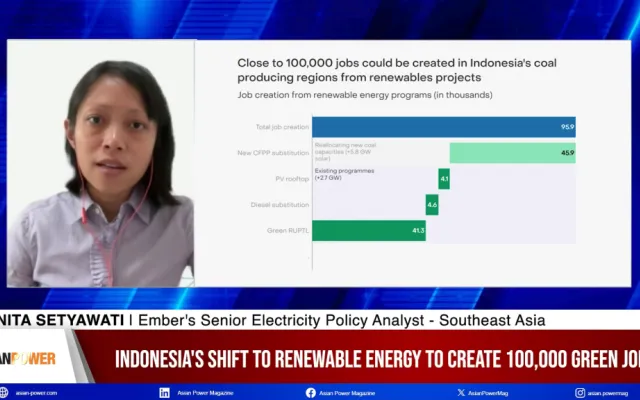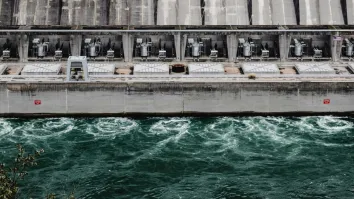
Indonesia’s renewable energy shift promises 100,000 green jobs in coal regions
Upskilling and reskilling of human resources needed to meet the demands of green jobs.
Implementing Indonesia's renewable programs and replacing coal plants with solar could create 100,000 new jobs, according to Ember.
“There are a lot of unallocated projects in the CIPP document. We think if there are certainties about these projects prioritising renewables projects, there will be increased confidence from the investors to join the JetPay investment,” Dinita Setyawati, Ember's Senior Electricity Policy Analyst for Southeast Asia said.
She emphasised the need for alignment between the green jobs roadmap and Indonesia’s national development plan to harness these opportunities effectively. However, this requires the government to implement programmes supporting the upskilling and reskilling of human resources and improving national curricula to incorporate renewable energy technologies.
Meanwhile, Dody Setiawan, Ember's Senior Analyst for Climate and Energy in Indonesia, stressed the importance of improving the investment climate for renewables and preparing human resources through formal education and training programs to meet the demands of these projects.
Impact on local economies
Expanding renewable energy in coal-dependent regions like East Kalimantan, South Kalimantan, and South Sumatra presents both challenges and opportunities. These areas currently rely heavily on coal for employment and subnational non-tax revenue. Setiawan explains, “With the energy transition happening everywhere, coal demand is likely to decline, and coal regions will face a significant risk from coal mine closure.” However, he also highlights that expanding renewable capacity in these regions can aid the transition and mitigate these risks by stimulating investment and creating jobs.
Setyawati adds, “Renewable expansions in these local economies will allow [foreign investors] to tap into the local market, explore new business creations and align their projects with their sustainability goals.” This could potentially lead to increased tax revenues and job creation, providing a much-needed economic boost to these regions.
Challenges and opportunities
Transforming old coal projects into renewable energy ventures is not without its hurdles. Setyawati identifies several challenges: “For certain, there will be some technical, financial, and perhaps social dimensions of repurposing these coal projects.” She emphasises the importance of equipping communities tied to fossil fuel industries with the skills and knowledge needed for renewable energy technologies, along with improved safety procedures and guidelines.
“Repurposing coal projects for renewable energy will have financial consequences for project developers, PLN, and even the government,” Setiawan said.
However, he warned that delaying action increases the risk of stranded assets and higher costs associated with uncertain energy generation and emission reductions. He pointed to Ember’s report, which suggests that maximising the capacity factor of existing thermal power plants could lead to additional cogeneration by 2030, reinforcing the need for immediate action.



















 Advertise
Advertise







Commentary
How pump retrofits boost profitability and efficiency in ageing power plants